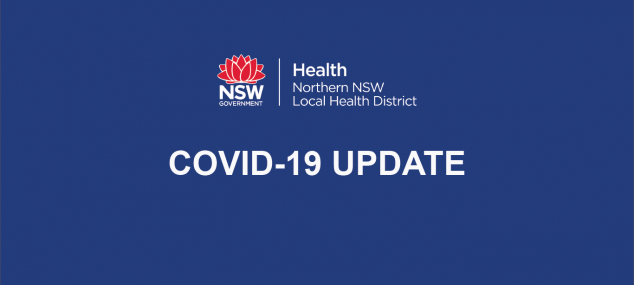
Northern NSW Local Health District is urging the community to maintain vigilance against COVID-19, as international cases continue to surge in many countries.
Although Northern NSW Local Health District has now recorded 200 days without a locally-acquired case of COVID-19 in residents of the region, we’ve seen cases emerge after long periods with no cases in different parts of Australia.
To help stop the spread of COVID-19:
- If you are unwell, get tested and isolate right away – don’t delay. Remain isolated until you receive your test result.
- Wash your hands regularly. Take hand sanitiser with you when you go out.
- Keep your distance. Leave 1.5 metres between yourself and others.
- Wear a mask when using public transport, rideshares and taxis, and in shops, places of worship and other places where you can’t physically distance. When taking taxis or rideshares, commuters should sit in the back.
To find your nearest testing clinic visit https://www.nsw.gov.au/covid-19/how-to-protect-yourself-and-others/clinics or contact your GP.
Health screening is still in place at all NNSWLHD facilities, and visitors are required to wear masks, as part of the measures to reduce any risk of transmission and keep patients safe.
Visiting hours remain limited to between 1pm and 6pm daily.
Chief Executive, Wayne Jones, praised the community for continuing to present for testing.
“It’s very pleasing that local residents continue to be tested, with over 1,600 tests each week throughout late January and early February,” Mr Jones said.
“We continue to urge anyone who feels unwell to come forward immediately for testing, then isolate until they receive a negative result.”
Mr Jones thanked the community for their ongoing support and adherence to the public health orders and safety measures, and reminded the public of the need to remain vigilant against the virus, both in the community and in health facilities.
“In all settings, we’re asking the public to continue to heed the advice of health staff, and that means using COVID-safe check-ins at venues, wearing a mask if asked to, performing hand hygiene and maintaining 1.5 metres distance from others,” Mr Jones said.
“We are incredibly grateful for the ongoing support our communities have shown to our health staff who are working hard to help keep us safe.”
The last positive case in NNSWLHD was reported on 25 July, 2020.
NNSWLHD cases by likely source of infection:
Source
Total
Overseas or interstate acquired
62
Locally acquired - contact of a confirmed case or in a known cluster
4
Locally acquired - source not identified
1
Under investigation
0
TOTAL
67